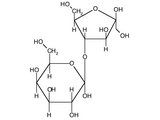American College of Gastroenterology Chronic Constipation Task Force. An evidence-based approach to the management of chronic constipation in North America. Am J Gastroenterol 2005; 100:S1-S4.
* Clinical Question
What is the best approach to evaluating and treating chronic constipation?
Study Design Systematic review
Setting Outpatient (any)
Synopsis
This evidence-based guideline is based on a careful accompanying systematic review. Chronic constipation is defined as infrequent or difficult stool passage, incomplete evacuation, prolonged time to stool, or the need for manual maneuvers to pass stool, for at least 3 months. It is estimated that the prevalence of chronic constipation is approximately 15%; it is more common in women.
Patients with alarm symptoms for cancer or bleeding should undergo a thorough diagnostic work-up. Otherwise, routine diagnostic testing is not recommended for patients with chronic constipation who have no alarm symptoms and no signs of organic disorder (such as hypothyroidism) after a careful history and physical examination.
Regarding treatment: of the bulking agents, psyllium increases stool frequency but data are insufficient regarding calcium polycarbophil, methylcellulose, or bran. There is insufficient evidence regarding the efficacy of stool softeners or milk of magnesia. There is good evidence that polyethylene glycol and lactulose both improve stool frequency and consistency.
There are few data regarding stimulant laxatives, but the available data suggest that they are of little benefit. Tegaserod (Zelnorm) improves the frequency and consistency of stools and reduces straining, particular in younger patients. There are insufficient data regarding alternative treatments, herbal supplements, lubricants, or combination laxatives.
* Bottom Line
Diagnostic testing is not needed for most patients with chronic constipation. The evidence is strongest for the efficacy of psyllium, polyethylene glycol, lactulose, and tegaserod. Research is not available to support the routine use of stimulant laxatives, lubricants, stool softeners, calcium polycarbophil, bran, or any herbal products. (LOE=1a)
FAST TRACK Routine diagnostic testing is not recommended for patients without alarm symptoms or signs of organic disorder
COPYRIGHT 2005 Dowden Health Media, Inc.
COPYRIGHT 2005 Gale Group



